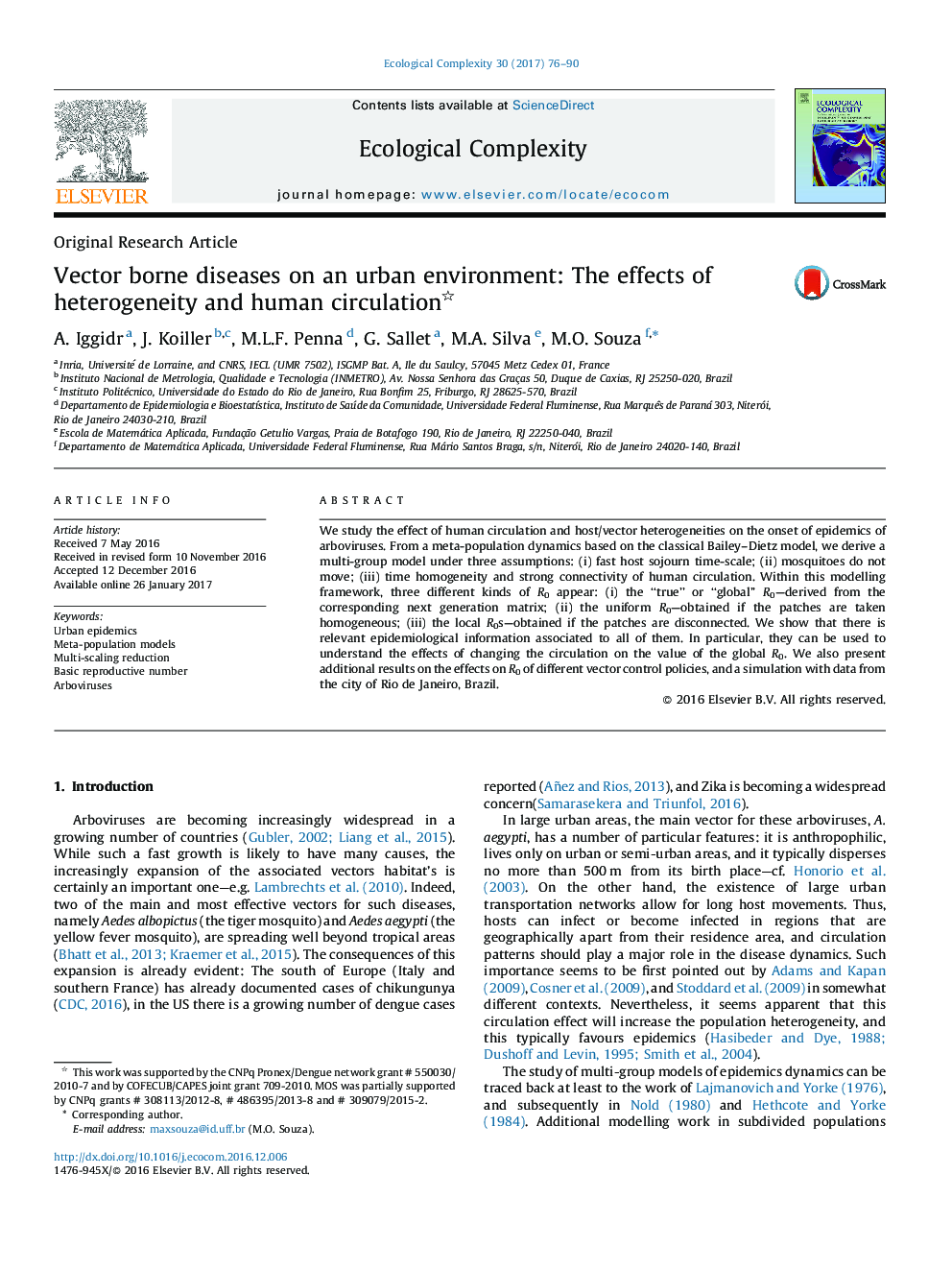| Article ID | Journal | Published Year | Pages | File Type |
|---|---|---|---|---|
| 5741248 | Ecological Complexity | 2017 | 15 Pages |
â¢We derive a multi-group from a meta-population model in the fast sojourn limit.â¢The derivation highlights how the detailed model parameters enter in the reduced one.â¢For a subclass, we show how R0 factors out into uniform and network contributions.â¢Relations among local, uniform and global reproduction numbers are obtained.â¢The multi-group model was shown to be parametrisable with real data.
We study the effect of human circulation and host/vector heterogeneities on the onset of epidemics of arboviruses. From a meta-population dynamics based on the classical Bailey-Dietz model, we derive a multi-group model under three assumptions: (i) fast host sojourn time-scale; (ii) mosquitoes do not move; (iii) time homogeneity and strong connectivity of human circulation. Within this modelling framework, three different kinds of R0 appear: (i) the “true” or “global” R0-derived from the corresponding next generation matrix; (ii) the uniform R0-obtained if the patches are taken homogeneous; (iii) the local R0s-obtained if the patches are disconnected. We show that there is relevant epidemiological information associated to all of them. In particular, they can be used to understand the effects of changing the circulation on the value of the global R0. We also present additional results on the effects on R0 of different vector control policies, and a simulation with data from the city of Rio de Janeiro, Brazil.
